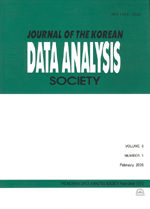간호사의 폭력경험과 외상후 스트레스 증상, 극복력 간의 관계
Relationships between Workplace Violence Experience and Posttraumatic Stress Symptoms, Resilience in Clinical Nurses
- 한국자료분석학회
- Journal of The Korean Data Analysis Society (JKDAS)
- Vol.17 No.1
-
2015.02515 - 530 (16 pages)
- 205

본 연구는 간호사가 경험한 병원 내 폭력경험 실태를 파악하고 외상후 스트레스 증상 및 극복력과의 관계를 확인하기 위해 시도된 횡단적 조사연구이다. 연구대상은 3개 도시의 상급종합병원에 근무하는 간호사 338명이었으며, 자료수집 기간은 2013년 9월 6일부터 9월 30일까지였다. 연구결과, 간호사의 폭력경험은 언어적 폭력 67.5%, 신체적 위협 47.0%, 신체적 폭력 16.3%, 성폭력 4.4%, 왕따 1.5%로 언어적 폭력이 가장 많았으며, 폭력 가해자는 환자와 보호자가 가장 많았으나, 의사와 동료도 상당 수 있었다. 외상후 스트레스 증상은 평균 17.51점이었고 외상후 스트레스장애의 절단점 이상이 31.4%였으며, 이직의도와 이직경험, 신체적 위협, 왕따 경험, 총 폭력경험이 유의한 영향요인으로 33%의 설명력을 보였다. 극복력은 평균 57.71점이었으며, 직위와 총 폭력경험이 유의한 영향요인으로 4%의 설명력을 나타냈다. 간호사의 폭력경험 빈도가 매우 높고 폭력경험은 외상후 스트레스 증상과 극복력의 유의한 영향요인이었으나, 현재 병원 내 폭력에 대한 중재와 대책이 미흡한 실정이므로 향후 간호사의 폭력에 대한 대처능력을 향상시킬 수 있는 프로그램 개발 연구를 통해 안전한 병원환경을 조성해야 할 것이다.
The purpose of this study was to identify the levels of violence experience that influence posttraumatic stress symptoms (PTSS) and resilience in clinical nurses. Participants were 338 nurses from three tertiary hospitals in South Korea. Data were collected from September 6 to 30, 2013 using self-report questionnaires. 71.0% of the subjects reported experiencing more than one type of violence; verbal abuse 67.5%, physical threat 47.0%, physical abuse 16.3%, sexual abuse 4.4%, bullying 1.5%. The mean score for PTSS was 17.51±18.52, resilience, 57.71±14.99. Stepwise multiple regression showed that turnover intention, history of turnover, physical threat, bullying, and total violence experience were associated with PTSS, and total violence experience and position were associated with resilience. The results of the study showed that the rate of violence experience was high and violence experience was the significant predictor of PTSS and resilience. As there are insufficient prevention and intervention for workplace violence in hospital, further studies should be needed for development program improving the nurses’ coping with violence at the safe environment in hospital.
1. 서론
2. 연구방법
3. 연구결과
4. 논의
5. 결론 및 제언
References
(0)
(0)